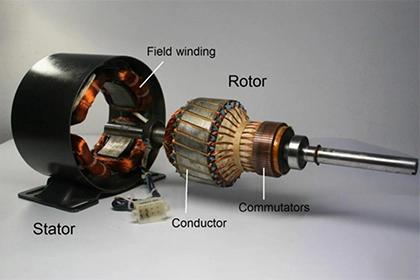
How to test an ac fan motor?
As a crucial component in equipment cooling, it is important to be able to test AC fan motors to check their condition and performance. This essay will outline the various tests that can be conducted on an AC fan motor in a structured way.
As cooling systems are critical to device reliability, it's important to thoroughly evaluate AC fan motors. This essay outlines tests to identify electrical, mechanical and performance issues through in-depth inspection and measurements.
Visual Inspection
A visual check evaluates external components. The fan is removed to carefully examine each blade under bright light. Blades are measured to identify any bending, cracks or material wear that causes imbalance. Mounting brackets, shafts and wire insulation are closely observed for cracks, corrosion or loose connections indicating mechanical stresses or shorting risks.
Connection Tests
Electrical wiring integrity is assessed using a multimeter set to resistance mode. Test leads are carefully connected to each winding terminal and a reading is noted. This process is repeated between all terminals and compared to factory specifications to find open circuits caused by overheating. Short circuits between terminals or to ground shielding are also checked to prevent components overloading.
No-Load Speed & Friction Test
Spinning the shaft by hand evaluates bearings and bushings conditions. Gently twisting the fan, speed is felt and any grinding, catching or uneven motion noticed. A smooth rotation slowing gradually without wobbling flags bearings for replacement to avoid potential overheating and damage.
Current Draw Measurement
An ammeter precisely measures startup and operational amperage drawn. Initial inrush and running current readings are recorded after multiple startups and compared to nameplate ratings. Higher readings despite proper voltage point to increased resistance from dirt, corrosion or damaged windings wasting power and reducing performance over time.
Load Performance Testing
Reliability is assessed under typical operating temperatures by running the fan with an enclosure. Performance is observed over extended periods, noting any abnormal vibrations from imbalance or grinding noises from worn bushings. Temperature sensors measure effectiveness against specifications to catch cooling capacity reductions necessitating maintenance before complete failure.
Efficiency Calculation
Accurate voltage and current measurements are noted at full load. Airflow volume is quantified and power input is divided by useful output. The resulting percentage highlights internal losses from friction requiring lubrication or repairs to minimize energy costs.
Conclusion
Only through diligent inspection and evaluation against quantitative data can maintenance personnel determine if it is more cost-effective to repair or replace an AC fan motor. Thorough testing ensures continued reliable operation.



Leave a Comment